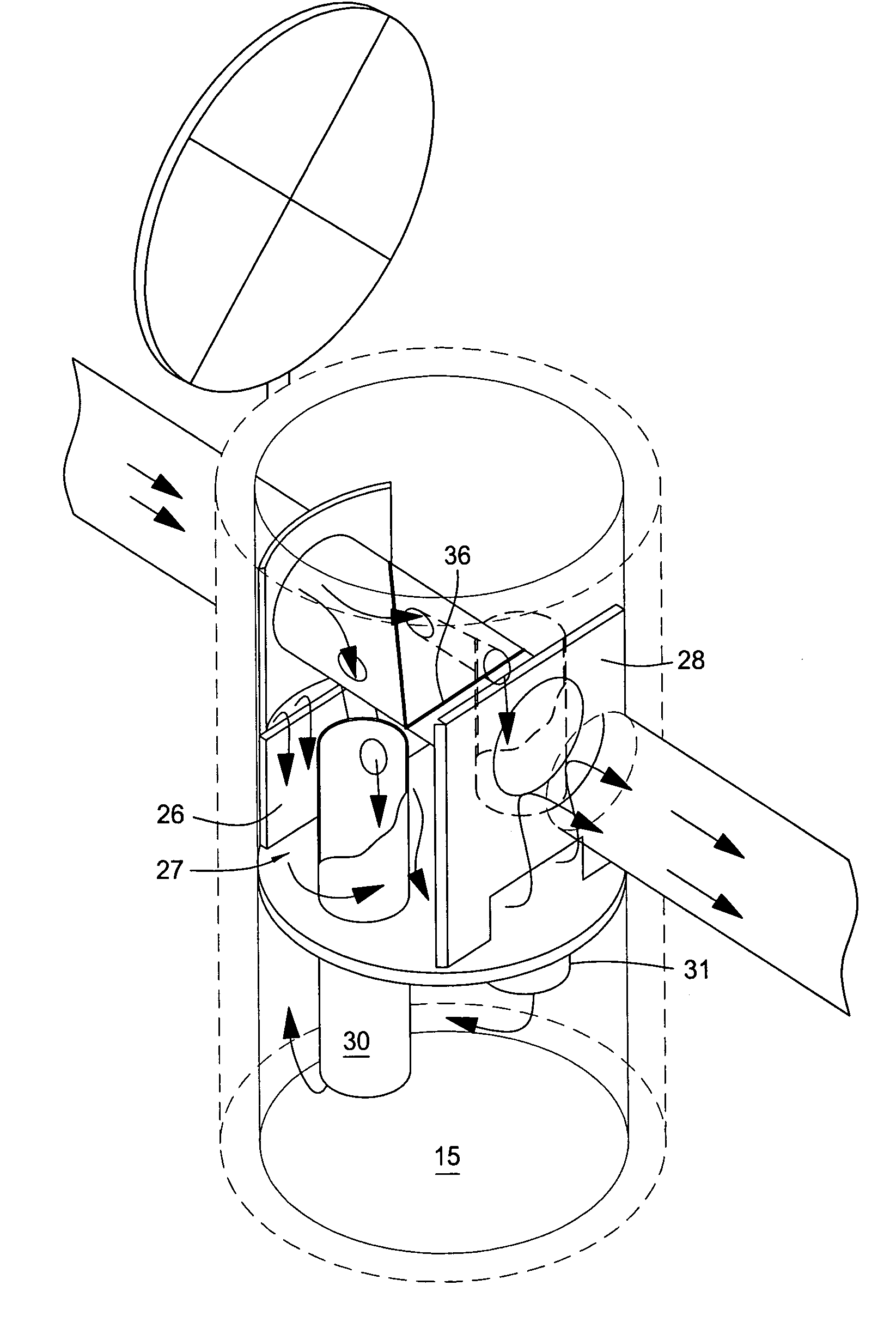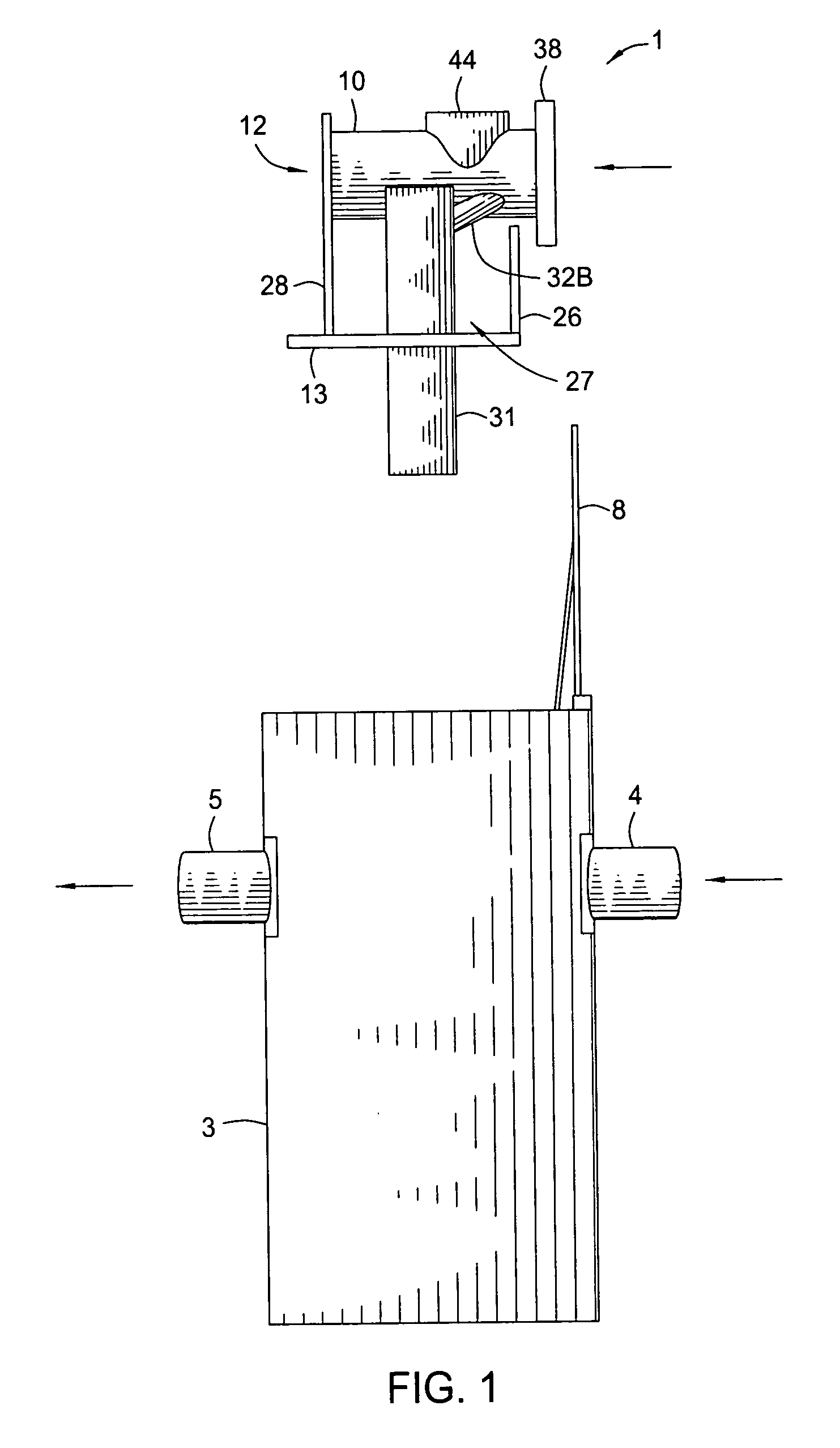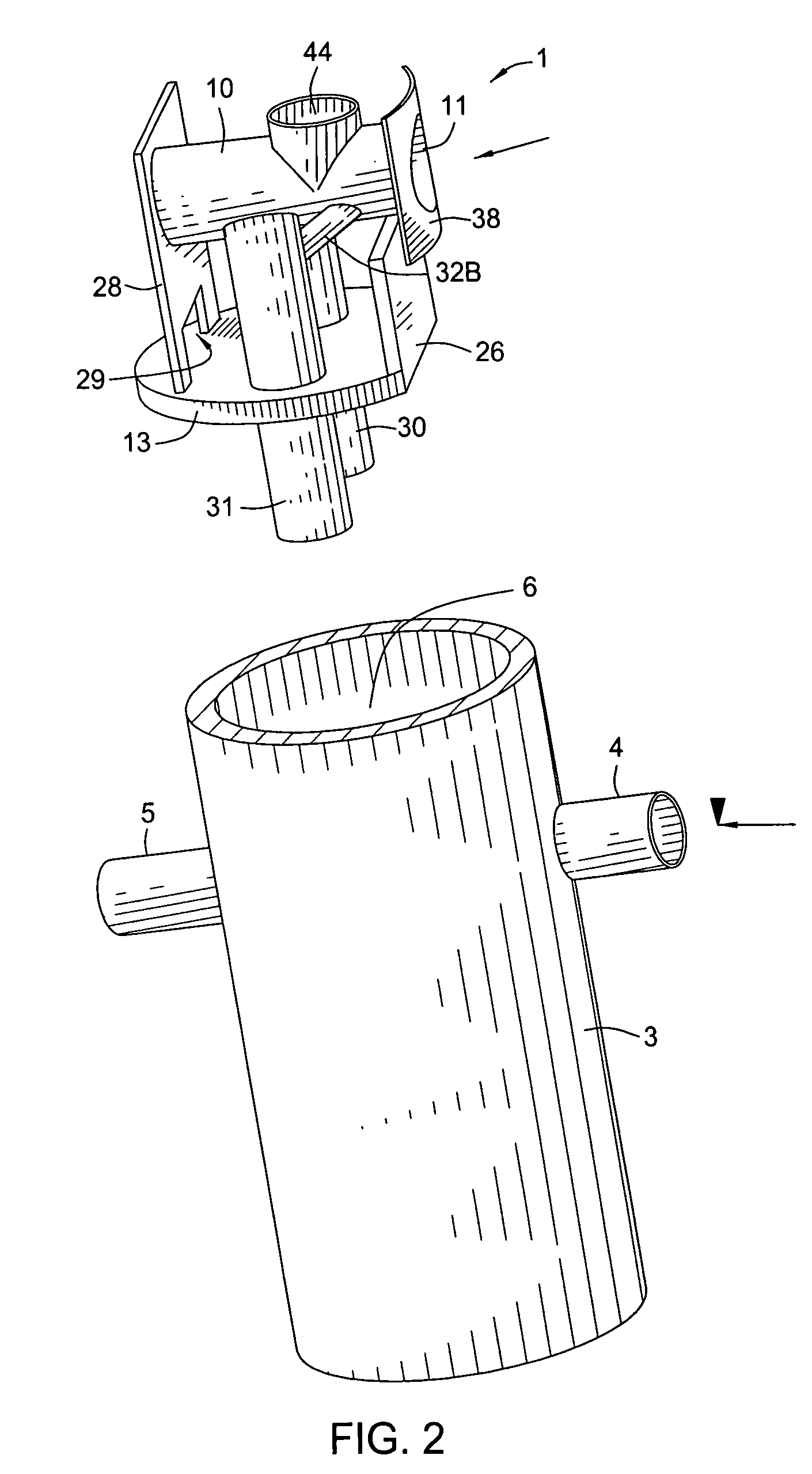Storm water treatment apparatus employing dual vortex separators
a treatment system and vortex separator technology, applied in water cleaning, liquid displacement, separation processes, etc., can solve the problems of heightened burden on those who regularly maintain these systems, easy access and maintenance of the system, and high installation and maintenance costs, so as to achieve high flow and high flow. , the effect of easy maintenan
- Summary
- Abstract
- Description
- Claims
- Application Information
AI Technical Summary
Benefits of technology
Problems solved by technology
Method used
Image
Examples
Embodiment Construction
[0027]The separator assembly of the present invention will now first be described with reference to the embodiment of FIGS. 1 through 4. The separator assembly 1 is shown in position above a manhole basin 3, connected to an inlet pipe 4 and an outlet pipe 5. The manhole basin is typically cylindrical in shape, having a smooth inner wall 6, a bottom floor 7, and a top, which is provided with an openable manhole cover 8, for allowing access to the basin. Inlet opening 9 is sized to receive a drain pipe carrying stormwater from one of more drains. The inlet is usually spaced at least one full equivalent manhole diameter distant from base 7 of the manhole. Typically, for the 4 foot diameter manhole illustrated in the figures, the inlet pipe will have a maximum diameter of 12 inches. For standard 5 and 6 foot diameter manholes, the inlet pipes are sized to a maximum of 18″ and 24″, respectively. Outlet opening 9′ in the wall of the manhole is positioned opposite to and somewhat below inl...
PUM
| Property | Measurement | Unit |
|---|---|---|
| diameter | aaaaa | aaaaa |
| diameter | aaaaa | aaaaa |
| size | aaaaa | aaaaa |
Abstract
Description
Claims
Application Information
 Login to View More
Login to View More - R&D
- Intellectual Property
- Life Sciences
- Materials
- Tech Scout
- Unparalleled Data Quality
- Higher Quality Content
- 60% Fewer Hallucinations
Browse by: Latest US Patents, China's latest patents, Technical Efficacy Thesaurus, Application Domain, Technology Topic, Popular Technical Reports.
© 2025 PatSnap. All rights reserved.Legal|Privacy policy|Modern Slavery Act Transparency Statement|Sitemap|About US| Contact US: help@patsnap.com



